You’ve received your tutoring, purchased your equipment, and reviewed what mistakes to avoid. Now, you’re ready to put your preparation into action. But how do you select which mushrooms to grow at home?
That depends entirely on what you want to achieve!
Don’t fret, we at the Fungi Academy are here to offer some guidance. Whether you want to grow sacred, edible, and/or medicinal mushrooms, we’ve got you covered with the seven best mushrooms to grow at home.
- Sacred Mushrooms
- Golden teacher
- Wavy caps
- Medicinal Mushrooms
- Reishi
- Lion’s Mane
- Shiitake
- Edible Mushrooms
- Oyster
- Wine Cap
- Honorable Mentions
- Sacred Mushrooms
Magic Mushrooms🍄
Let’s start with the most intriguing of the bunch.
First, let’s get the legal formalities out of the way. We do not support the possession or sale of any magic mushrooms, be it cultures or otherwise.
Further, we do not endorse nor condone the use of sacred mushrooms. It’s likely you live in a country where it is currently illegal to cultivate sacred mushrooms (if you don’t – woohoo!🎉). Our goal is not to get you in trouble with the law, but to arm you with knowledge when these laws change.
We see this as an inevitability given the breakthrough studies done at Johns Hopkins and The Imperial College London. When the rest of the world begins to recognize the healing powers of these gifts, you’ll be ready. We believe sacred mushrooms are the key to unlocking our hearts and healing ourselves and the planet. Every sacred mushroom experience should be taken cautiously!
Without further ado, here are a two of the best magic mushrooms to grow at home:

Golden Teachers / Cubes🧙♂️
Taxonomy Name: Psilocybe cubensis
Main Benefits: Ego dissolution, addiction cessation, relief of anxiety, depression & PTSD
Incubation Temperature: 75-80°F (24-27℃)
Fruiting Temperature: 73-77°F (23-25℃)
Fruiting Substrate: Coconut coir, cow or horse manure, wheat straw, rye grain
Bulk Container: Monotubs, trays or outdoor beds
Active Compounds: Psilocybin, Psilocin, Baeocystin
Native to: Tropics and subtropics around the world
Fun Fact: The best known of the Psilocybe mushrooms
If you’ve had a magic mushroom experience, it was probably a Psilocybe cubensis strain. They are known for their resilience among psychedelic mushroom species and grow in a wide variety of climates, making them a great species for beginner cultivators searching for an easy mushroom to grow at home.

Wavy Cap🌊
Taxonomy Name: Psilocybe cyanescens
Main Benefits: Ego dissolution, addiction cessation, relief of anxiety, depression & PTSD
Incubation Temperature: 64-75°F (18-24℃)
Fruiting Temperature: 50-64°F (10-18℃)
Fruiting Substrate: Hardwood sawdust and woodchips
Bulk Container: Trays or outdoor beds
Active Compounds: Psilocybin, Psilocin, Baeocystin
Native to: Temperate forests
Fun Fact: A pioneering species, and one of the first to appear when wood is chipped
If you’re looking to add some variety to your sacred mushroom experience, Psilocybe cyanescens is your next best bet. It is also known for its resilience and can be relatively easy to cultivate if you live in the northern hemisphere. In nature it is an ‘edge-runner’, growing along ecological boundaries. This suggests that it is a strong companion to the plants it surrounds, acting as a barrier between contrasting environments (along roads, trails, and bridging deciduous and coniferous zones). It’s also worth noting that psilocybe cyanescens is known to be more potent than psilocybe cubensis.
Medicinal Mushrooms💊
While innumerable mushrooms contain healing properties, some are just a cut above the rest. With the ability to boost your immune system, combat cancer and ward off viruses, these fungi are extremely powerful allies to incorporate into your day-to-day life.
Forget about going to the pharmacy – you are literally cultivating your own preventative medicine when growing these mushrooms at home.
These mushrooms have invaluable potential to empower your family and community at large, especially in countries like the United States where routine health care can be financially crippling.
Here are three of the most beneficial medicinal mushrooms to grow at home.
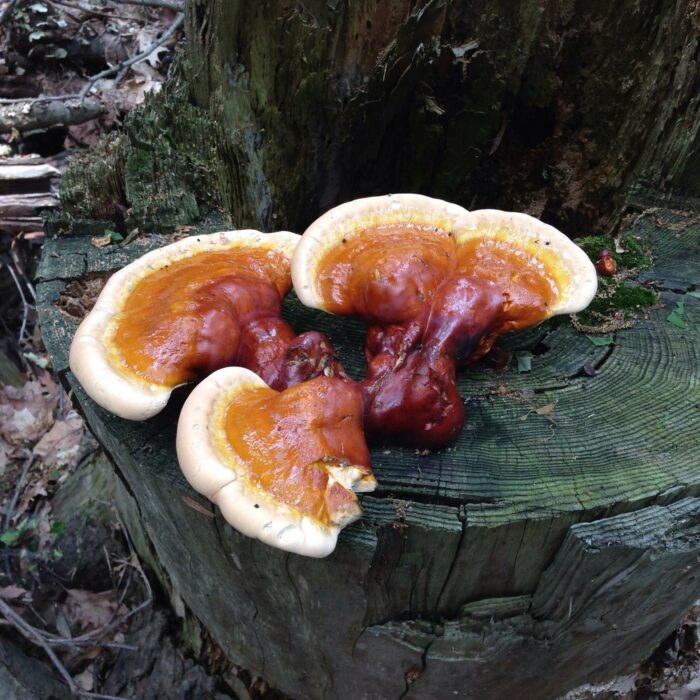
Reishi🎐
Taxonomy Name: Ganoderma lucidum
Main Benefits: Aid digestion, treat common cold or flu, help fight and cure infections (including cancer)
Incubation Temperature: 70-80°F (21-27℃)
Fruiting Temperature: 64-75°F (18-24℃)
Fruiting Substrate: Hardwood sawdust, logs, or wood chips
Bulk Container: Bags or Logs
Active Compounds: Ganoderic acids
Native to: Tropical, subtropical and temperate climates. Very adaptive and can be found everywhere during warm and moist seasons.
Fun Fact: The first written document on Reishi was in the era of the first emperor of China, Shih-huang of the Ch’in Dynasty (221-207 B.C.)
Reishi, also known as the Mushroom of Immortality, 10,000-Year Mushroom,and Mushroom of Eternal Life, is one of the most well-studied, documented and known medicinal mushroom in the world. It is a medicinal powerhouse, having been used to fight cancer, viral, and bacterial infections, cardiovascular diseases (including high cholesterol and blood pressure), diabetes, as an antihistamine, and to slow aging and improve general well-being. Reishi mushrooms possess over 500 unique compounds known as Ganoderic acids.

Lion’s Mane 🦁
Taxonomy Name: Hericium erinaceus
Incubation Temperature: 70-75°F (21-24℃)
Fruiting Temperature: 64-75°F (18-24℃)
Fruiting Substrate: Hardwood sawdust and bran
Bulk Container: Bags
Main Benefits: Neural Growth Factor
Active Compounds: Hericenones & erinacines
Native to: North America, Europe, Japan, China
Fun Fact: Has the flavour of shrimp or lobster when cooked
Lion’s Mane is popular in fungal medicines because of its unique ability to improve brain function and stimulate neural growth factor. Not only is it effective in battling neurological disorders like Alzheimer’s, Parkinson’s or muscular dystrophy, but it’s also one of the tastier mushrooms in the forest! Considering its powerful effect as ‘brain food’, it can be an effective ally to stack with psilocybe microdoses to strengthen new neurological pathways.

Shiitake 💩
Taxonomy Name: Lentinula edodes
Main Benefits: Anti-cancer, anti-bacterial, anti-viral
Incubation Temperature: 70-80°F (21-27℃)
Fruiting Temperature: 70-80°F (21-27℃)
Fruiting Substrate: Hardwood sawdust or logs
Bulk Container: Bags, logs
Active Compounds: Lentinan
Native to: Japan, Korea, China
Fun Fact: The most popular and well studied medicinal mushroom
Cultivation of this mushroom has employed thousands of people in Asia for centuries. These mushrooms are popular because they make great culinary companions in addition to their medicinal properties. For best results, incubate your shiitake in hardwood logs without making ground contact, and cover them with a tarp or burlap sack. In a dense wooded area they can continue to fruit for up to six years with no extra effort, making it a perfect beginner mushroom to grow at home.
Edible Mushrooms🍴
Edible mushrooms are some of the most pervasive in our lives. In fact, many people do not know much about fungi outside its use as a food source.
While many mushrooms have proven to possess medicinal qualities, these edible staples have been used by humanity to create delicious and nutritious meals while also augmenting restrictive diets. Mushrooms can be a great substitute for meat, stuffed with delicious ingredients, or perfectly fine on their own.
The good news is that most edible mushrooms are also the easiest to grow!

Wine Cap🍷
Taxonomy Name: Stropharia rugoso annulata
Main Benefits: Food source and garden ally
Incubation Temperature: 70-80°F (21-27℃)
Fruiting Temperature: 70-80°F° (16-21℃)
Fruiting Substrate: Hardwood sawdust & woodchips, straw
Bulk Container: Outdoor beds
Active Compounds: Medicinal properties are largely unexplored
Native to: Europe & North America
Fun Fact: One of the premier species for habitat restoration
We included the wine cap on this list because of its ability to thrive in a wide variety of climates and because of its critical role in bioremediation garden companionship. It proves to be a great companion fungus to grow right in your garden alongside your vegetables, helping them flourish. While studies suggest these mushrooms that are so easy to grow at home could have a variety of medicinal benefits, they are best used to remove toxins from the environment or to fill your belly.

Oysters
Taxonomy Name: Pleurotus sp.
Main Benefits: Lowers cholesterol, anti-viral, easy to cultivate
Incubation Temperature: 70-86°F (21-30℃)*
Fruiting Temperature: 55-86°F (13-30℃)*
Fruiting Substrate: Cereal straw, corn cobs, coffee ground, hardwoods
Bulk Container: Bags, logs, buckets
Active Compounds: Natural form of Lovastatin
Native to: Temperate and tropical forests
Fun Fact: Perhaps the most common mushroom species on the planet
To quote Paul Stamets, “If one mushroom can steer the world on the path to greater sustainability, fighting hunger, increasing nutrient return pathways in ecosystems, destroying toxic wastes, forestalling disease, and helping communities integrate a complexity of waste streams, oysters stand out”.
Need we say more? Whether it’s Elm, Pink, King, Tree, Phoenix or any other oyster, oyster mycelium has an insatiable appetite and will grow on almost any substrate you throw its way. This is what makes it the most widely cultivated and easiest mushroom to grow at home or anywhere, really!
*range depends on specific oyster species
Honorable Mentions🌈
Here are some other valuable species of mushrooms to grow at home you should consider. They didn’t make our list because of their sensitivity to growing conditions, making them a bit more difficult to cultivate. However, these have some of the most beneficial properties to humanity of all known fungi to date.
- Turkey tail (Trametes versicolor)
- Cordyceps (Ophiocordyceps militaris)
- Maitake (Grifola frondosa)
Conclusion🌌
While some of the mushrooms on our list could be listed in multiple categories, we categorized them based on their traditional usage (one could easily classify almost any fungi as ‘medicinal’ one way or another). This list is meant to be a collection of mushrooms that are comprehensive in their benefits, accessible to many populations and easy to cultivate.
Please leave a comment below if you feel we excluded a mushroom you believe should be on this list, or if you have any specific questions about the cultivation process!
If you want to learn all about mushroom cultivation and more, join our Online Sacred Mycology School! Not only will you learn about all things mushrooms, but you will connect to other like-minded mycophiles from across the world.
Stay up to date on all things fungi by following us on Instagram @fungiacademy and signing up for our newsletter.
Mush love!❤🍄
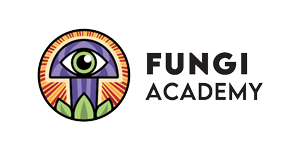



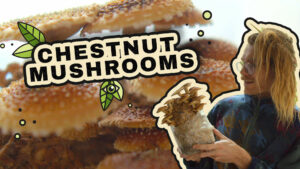
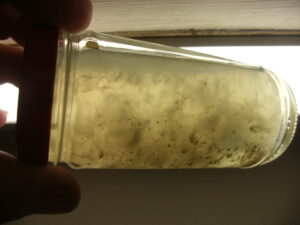




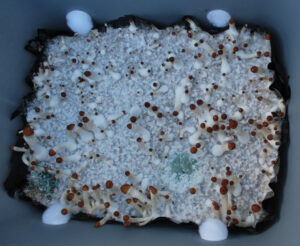
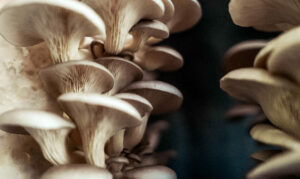
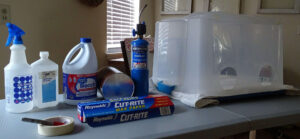
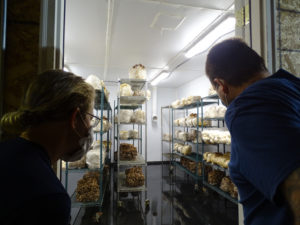



Responses
I’m looking to grow mushrooms in commercial nature but what I have is an indoor space my space is 24‘ x 20‘ so if I take your course I would like to know if it is possible to do an indoor commercial space towards that size or if I’d have to break it up into rooms or or I have tables I have tables that are 5 feet wide by 12 feet long I am a cannabis grower but I am getting out of the cannabis industry I want to widen my horizons and grow something different something that I can learn something new I’m a very well experienced cannabis grower but what I’m looking to doIs the grow in the commercial space
I have no problem taking your course and learning what you know it’s always good to know more knowledge than less knowledge like I said in my last email I am looking to expand into something new and this is interesting to me I have tried it once before but just in a little scale I’ve done it in the magic mushroom containers five containers that are like 1‘ x 8“ wide and there was five containers so I learned a little bit about it but I didn’t really learn much it was more like they send you a package and say do this do that and you will grow mushrooms it worked they turned out well but I want to go commercial and I want to go in a closed environment so if you can send me in some information on what I need to do and how I need toGold commercial and if it’s better to do it in bags or do it on tables those are the questions I kind of have so please email me back when you get this message thank you Tony
Thanks for your information I’ll try this out I live in Ireland. I hope they’ll grow at home for me.
And you should make a group thing chat so we can all talk together that would be cool. We are simply are similar people trying to live not be sad and see more. Thanks. X
Peace.
A group chat sounds nice. How’s Ireland?
Use discord for group chat also if you need help I can point you In the right direction
Daytoday13@protonmail.com
Where to buy kits and spores